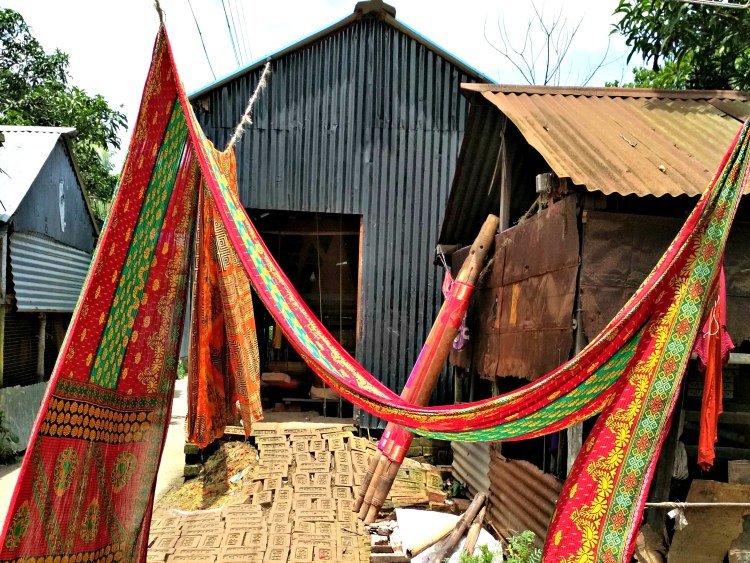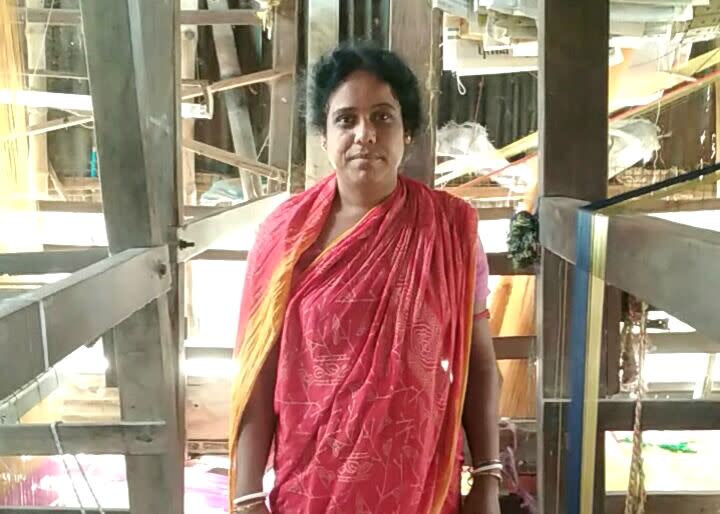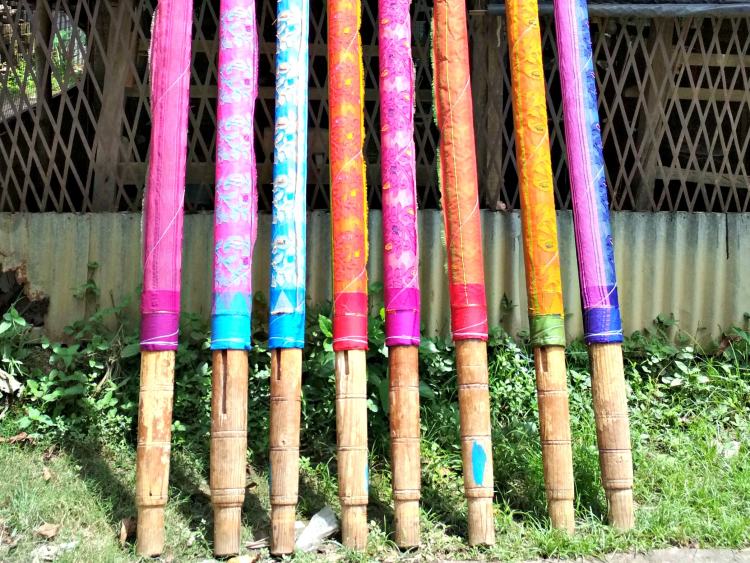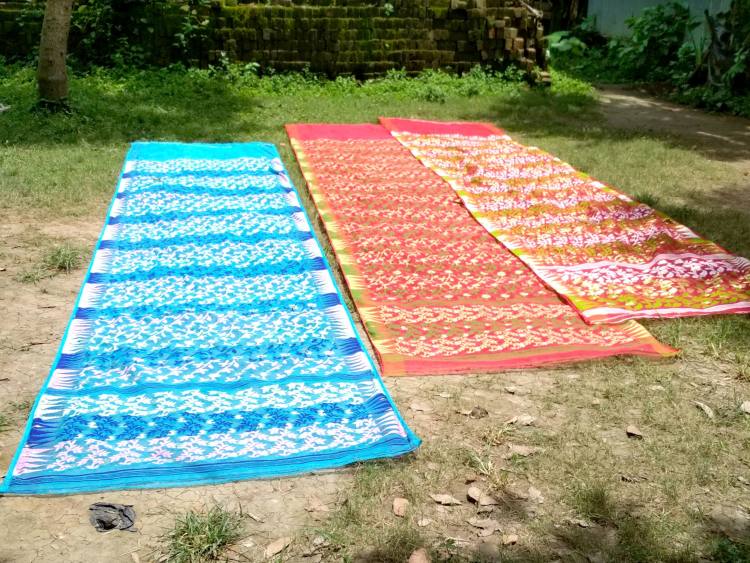Many of us might have owned handloom sarees or seen them pass down from one generation to another. Yet, how often do we stop to think about each meticulously created detail that manifests itself in these beautiful pieces?
I, for one, was oblivious to the series of artistic processes that create the bigger picture. However, this changed when I went for my field visit to Dhatrigram, in Bardhaman district of West Bengal. The first thing I noticed as I entered the village was that one hand-loom mill followed another. The village was buzzing with activity throughout the day.
The area is known for its scrupulous hand-loom products ranging from woven dhotis to cotton saris. Around this time of the year, however, the sole product is the sari, that is crafted especially for Durga Puja celebrations.

(Passage to a hand-loom mill)
While the rest of the country gears up for the festive season, Dhatrigram does so in its own way. Each hand-loom produces up to two sarees a week, while the creators rejoice in their work from morning to evening.
The sound of the Tant machine (the handloom found in this area) echoes in the village, along with jubilant music that varies from traditional Bengali to Bollywood.
Mithu Basak, 39-years-old, gave me an insight into the working of the handloom by inviting me to her mill. I spent the morning observing the painstaking processes that turn the yarn into the thread, thread to fabric, and fabric to the final product.
Once the warping and dying of the thread are done in the cooperative society, it is sent to the hand-loom centres. Weft winding is usually carried out by the woman of the house. A woman sits by the weft and passes each thread into the machine, thereby giving the fabric its structure.
The weaving process is divided into several interlinked processes. Numerous designs are imprinted on dobby plates, which are set on the loom, to create the ground and pallu designs of the sarees. The designers have different sets of seasonal designs. They use traditional Bengali saree motifs for the festive season.

(Dobby plates with traditional motifs, attached to the Tana part of the hand-loom)
The typical Tant saree comprises of a thick border and decorative pallu, woven with motifs such as bhomra (bumble bee), tabij (amulet), rajmahal (royal palace), ardha-chandra (half moon), chandmala (garland of moons), ansh (fish scale), hathi (elephant), nilambari (blue sky), ratan chokh (gem-eyed), benki (spiral), tara (star), kalka (paisley) and phool (flower).
The handloom is situated close to the ground, and there is a pit with peddles for the weaver. Similar to the pit loom, the Tant uses the area below in order to facilitate faster movement and create breathable soft fabric. The weaver uses two shuttles to convert the thread into cloth.

(Weavers at work)
‘Besides being a physical activity, weaving requires a significant amount of concentration and mental effort,’ said Mithu, the owner of the handloom mill. Her entire life revolves around the hand-loom business. She has created not only a myriad of saris worn by women all over the country but has also created dreams for herself and her children. The profit made from this business contributes to her children’s education fund.

(Mithu Basak, proud of her establishment)
The final touches are done by hand, she said. The interplay of embroidery, dobby plate designing, and weaving give us the final product, which then finds its way to the markets in cities.
(Colourful saris, ready to journey into the city markets)
The art is passed on from generation to generation, and cannot be learned in a few days. It certainly serves as the primary occupation in the region but also carries forward an age-old legacy. The Tant became famous under Mughal guidance in and around Dhaka.
Despite British efforts to ruin the industry, to promote Manchester products, the art survived. The skilled weavers settled in Nadia and Bardhaman districts of Bengal. The weaver now stands as a symbol of tradition and culture, across the country.
(Hand woven wonders of India)






















